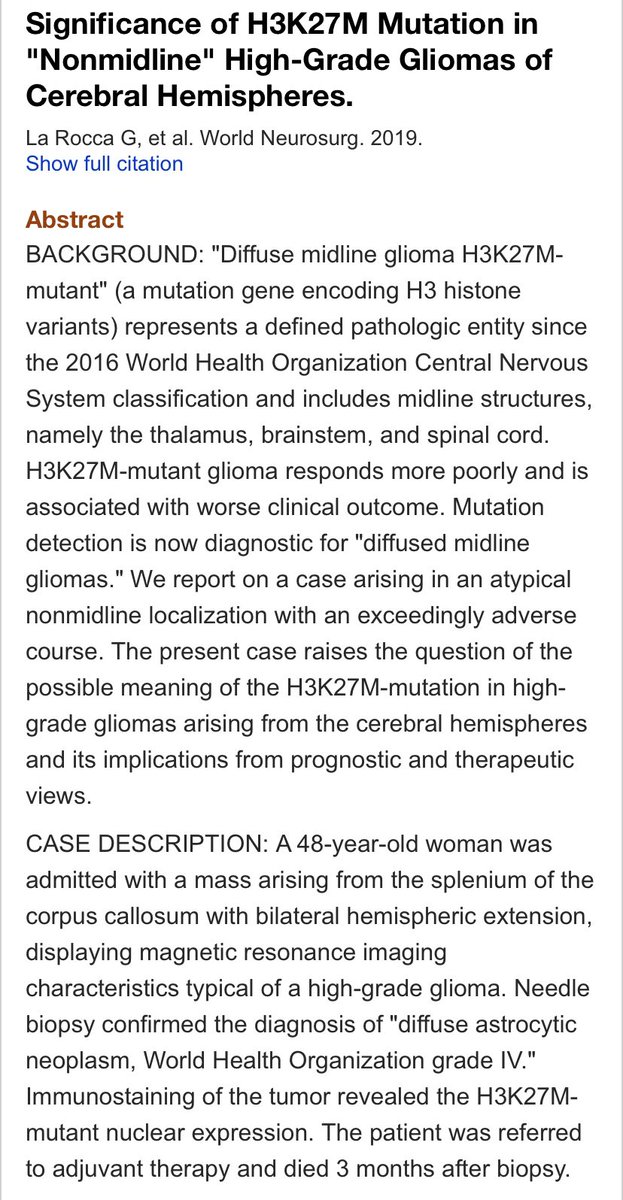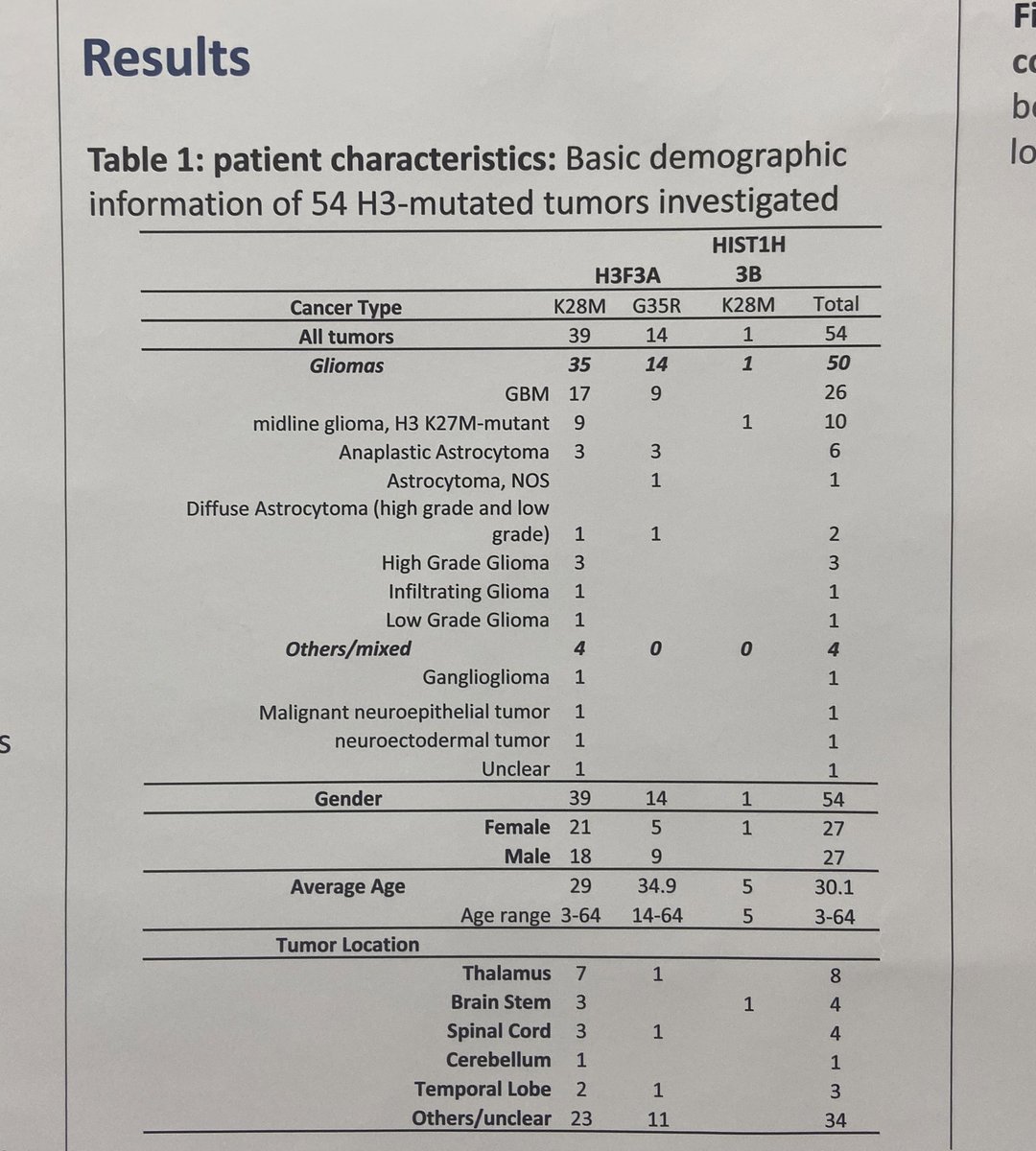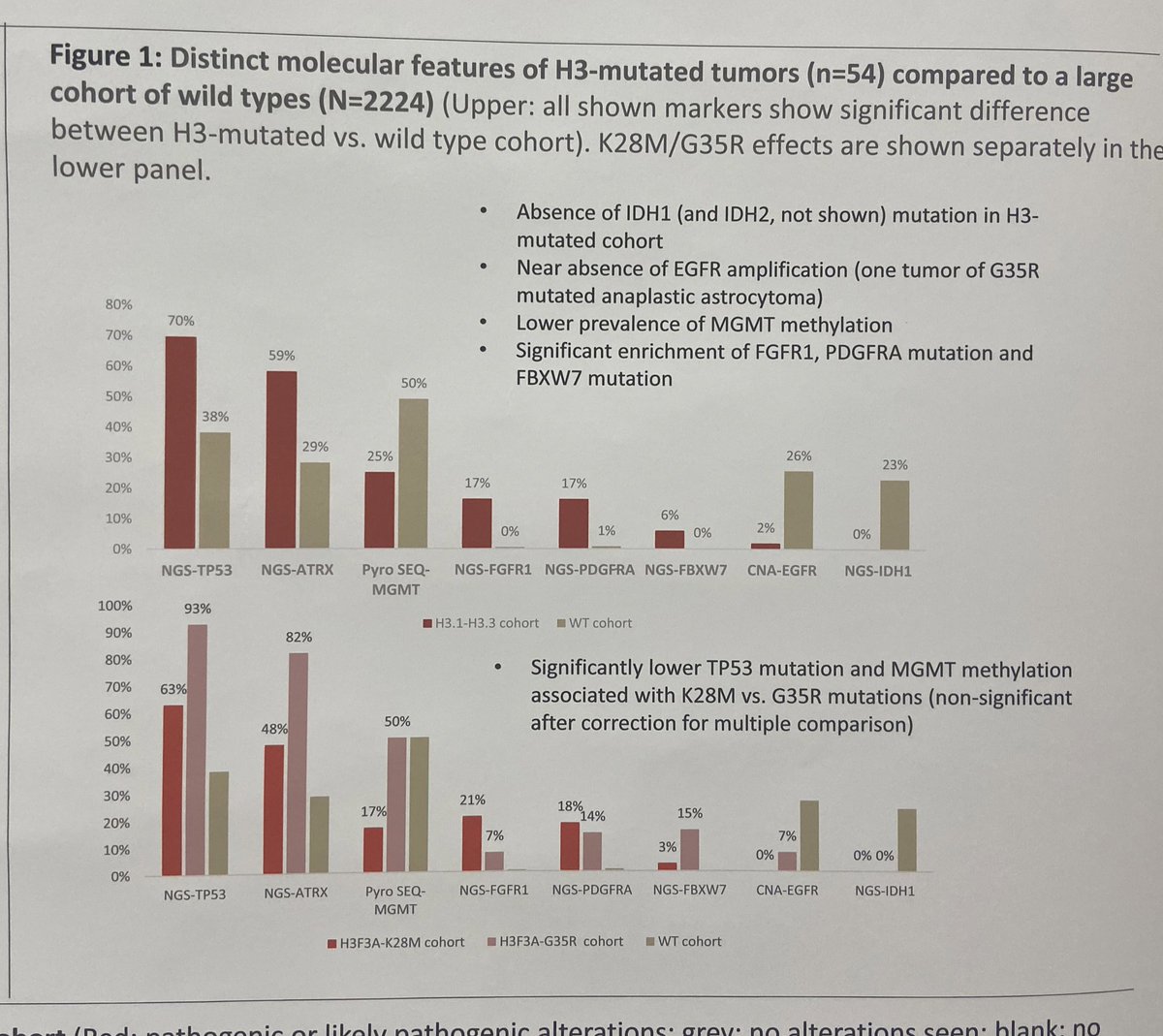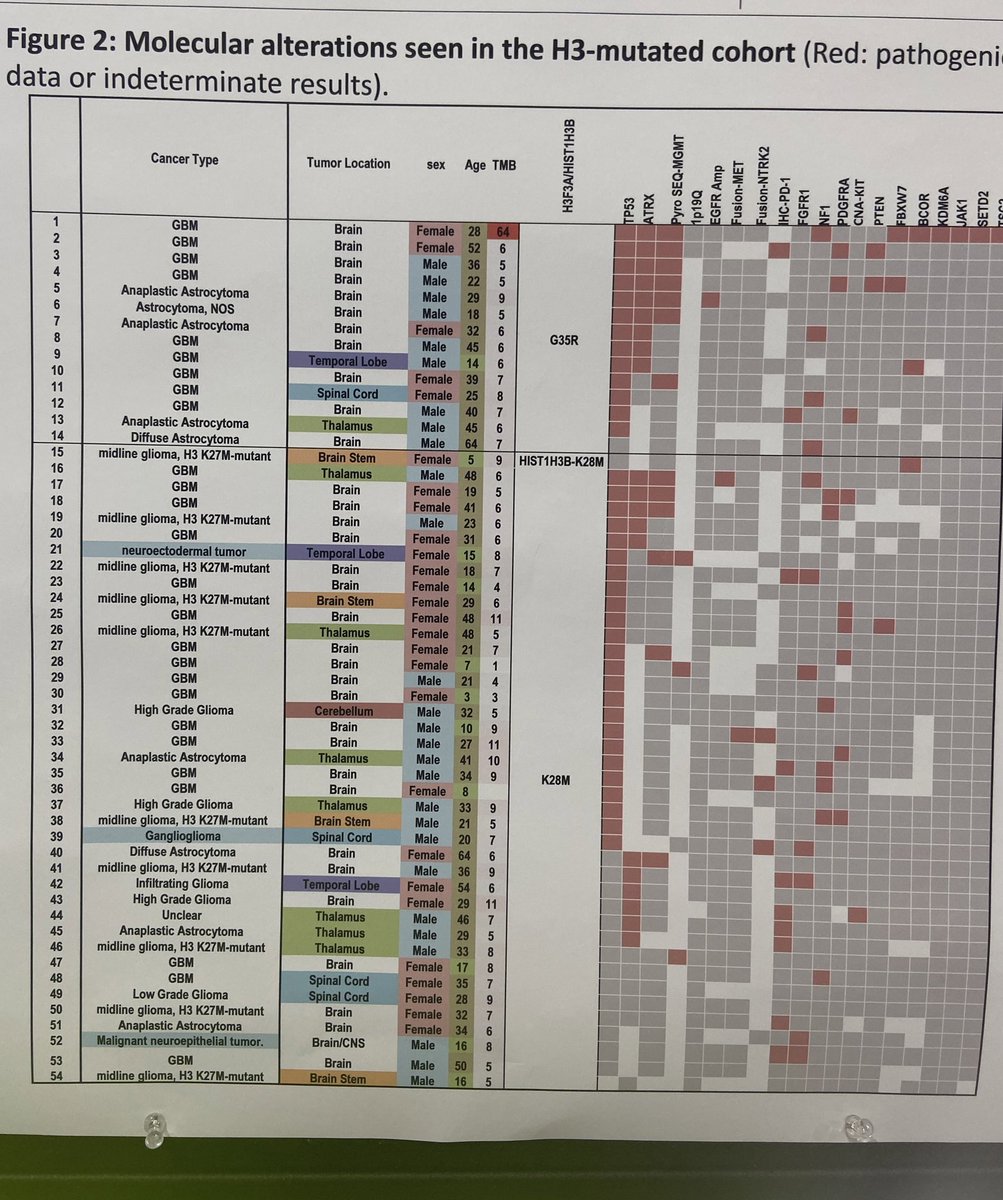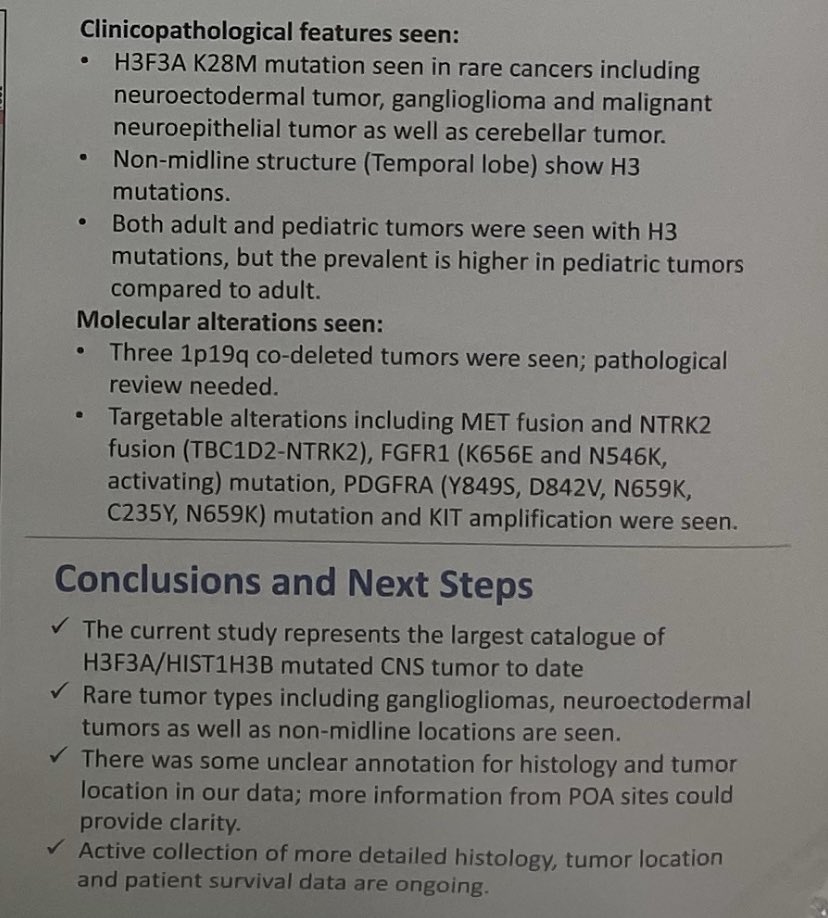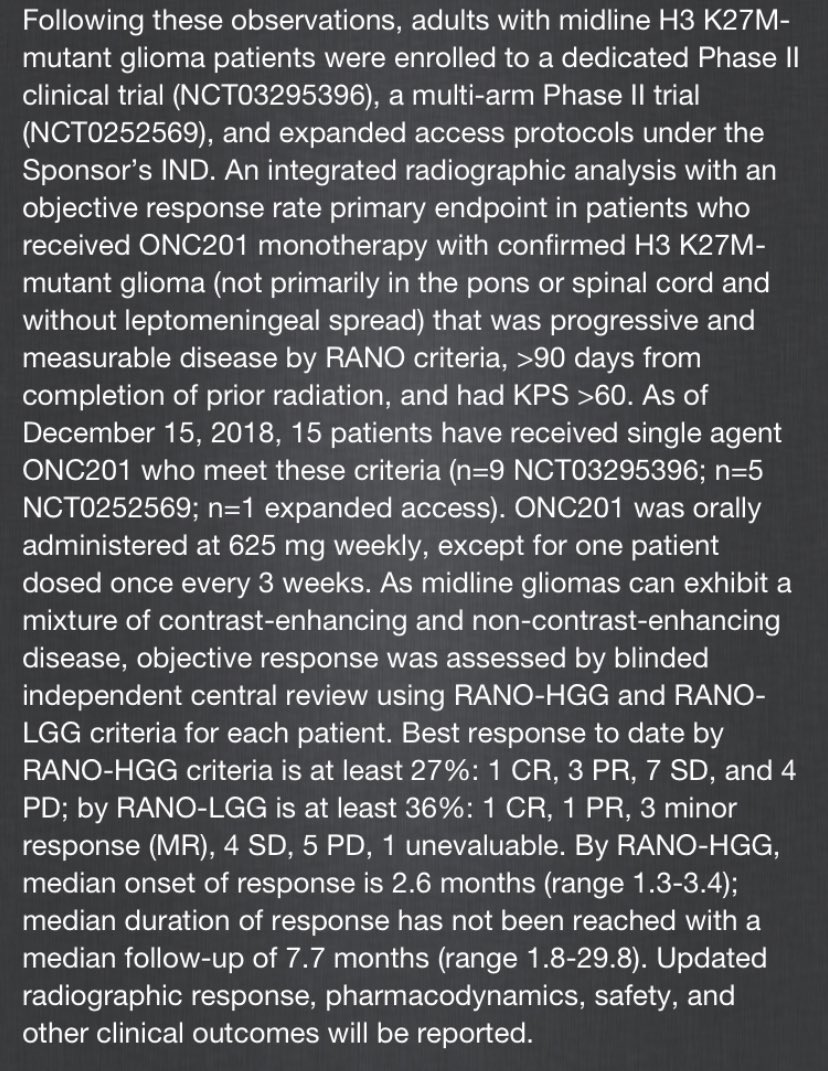Because I’m presenting an etalk and poster on #H3K27m gliomas tonight, I thought we could review them. Here’s a tweetorial for #SNO2019 #btsm @LevineCancer
These tumors were “born” in 2016 when WHO reclassified brain tumors. https://braintumor.org/wp-content/assets/WHO-Central-Nervous-System-Tumor-Classification.pdf">https://braintumor.org/wp-conten...
They are related to #DIPG and pts w these tumors are similarly included in clinical trials with them. https://www.ncbi.nlm.nih.gov/pmc/articles/PMC4654747/">https://www.ncbi.nlm.nih.gov/pmc/artic...
There are no FDA approved treatments for this condition. We traditionally offer radiation +/- temozolomide
The history is fascinating though. It “should” be H3K28. Anyone know why??
Also, If you want a good primer on histone 3 mutations, https://www.ncbi.nlm.nih.gov/pubmed/30101054/">https://www.ncbi.nlm.nih.gov/pubmed/30...  https://abs.twimg.com/emoji/v2/... draggable="false" alt="😊" title="Smiling face with smiling eyes" aria-label="Emoji: Smiling face with smiling eyes"> #H3K27m
https://abs.twimg.com/emoji/v2/... draggable="false" alt="😊" title="Smiling face with smiling eyes" aria-label="Emoji: Smiling face with smiling eyes"> #H3K27m
Anyway, back to it. For a while, people weren’t quite sure when they should check for this mutation. Everyone thought that it was just for midline tumors. But, then reports came out that this mutation could exist elsewhere. Let’s reference those
https://www.ncbi.nlm.nih.gov/pubmed/31415896/">https://www.ncbi.nlm.nih.gov/pubmed/31...
There are some case reports of involvement of the cerebellum. https://www.ncbi.nlm.nih.gov/pmc/articles/PMC6055926/">https://www.ncbi.nlm.nih.gov/pmc/artic...
The data for the thalamic concentration is really interesting as well. https://www.ncbi.nlm.nih.gov/pubmed/30937985/">https://www.ncbi.nlm.nih.gov/pubmed/30...
You will also notice that histology doesn’t matter here!! (The blasphemy... I know) https://www.ncbi.nlm.nih.gov/pmc/articles/PMC4201745/">https://www.ncbi.nlm.nih.gov/pmc/artic...
There are some tumors that are traditionally thought of as low grade From histologic stance that are auto upgraded to high-grade due to this mutation status. Let that sink in for a minute...
Is it reasonable to say that all midline tumors should be checked for this mutation, regardless of histologic status? Maybe... this becomes only truly relevant if & when we have an available treatment option that is targeted for this #H3K27m mutation. More to come on that later.
And what do we know about the behavior of these #H3K27m tumors? There’s very little published, but there are investigators looking at this.
We know that these tumors are very fond of moving down into the spinal cord. I routinely recommend imaging the entire neuraxis when seeing a patient with an #H3K27m midline tumor.
There have been some pre-clinical models which have suggested why these tumors like to spread. https://thejns.org/pediatrics/view/journals/j-neurosurg-pediatr/aop/article-10.3171-2019.8.PEDS18664/article-10.3171-2019.8.PEDS18664.xml">https://thejns.org/pediatric...
Hopefully, in the next year, we will have some additional data that describes why and how often they move into the spinal cord. If you have cases and are interested in contributing, please reach out to me about that!! #H3K27m
If you’ve taken care of any patients who have tumors with this #H3K27m mutation, you’ll notice that there is enhancing and non-enhancing disease present on the MRI. You also notice that they are incredibly hard to measure and fit into #RANO criteria.
Again, if you do have cases, and are willing to collaborate with the group, please DM me! The way that these tumors grow, metastasize, and respond to treatment, is a very important area that we need to better characterize as a community. #SNO2019
Given that this dz is so interesting to me, I approached @carisls about reviewing these cases. This led to the poster that I’m presenting tonight. With the help of some very talented colleagues through the @caris POA, we present the biggest list of #H3 mutated brain tumors.
To be continued...
In our cohort, there were pts with midline tumors, as well as temporal lobe and cerebellar lesions. (Too many unknowns, but we’re examining that)
Furthermore, We compared our cohort to other IDH wild type tumors. I have not pointed this out yet, but having the #H3K27m mutation is exclusive to #IDH wild type tumors
And there are interesting findings such as concurrent #NTRK fusion, MET fusion, & more. We need to analyze more tumors!!
So, given this info, as well as the understanding that we should better understand these tumors w ongoing efforts in the next year... we need treatment options...
Earlier today, this presentation on #ONC201 set the stage for discussion of treating pts w/ #H3K27m mutated gliomas on trial. <disclosure: I’m an author & I have #ONC013 open at @LevineCancer >

 Read on Twitter
Read on Twitter